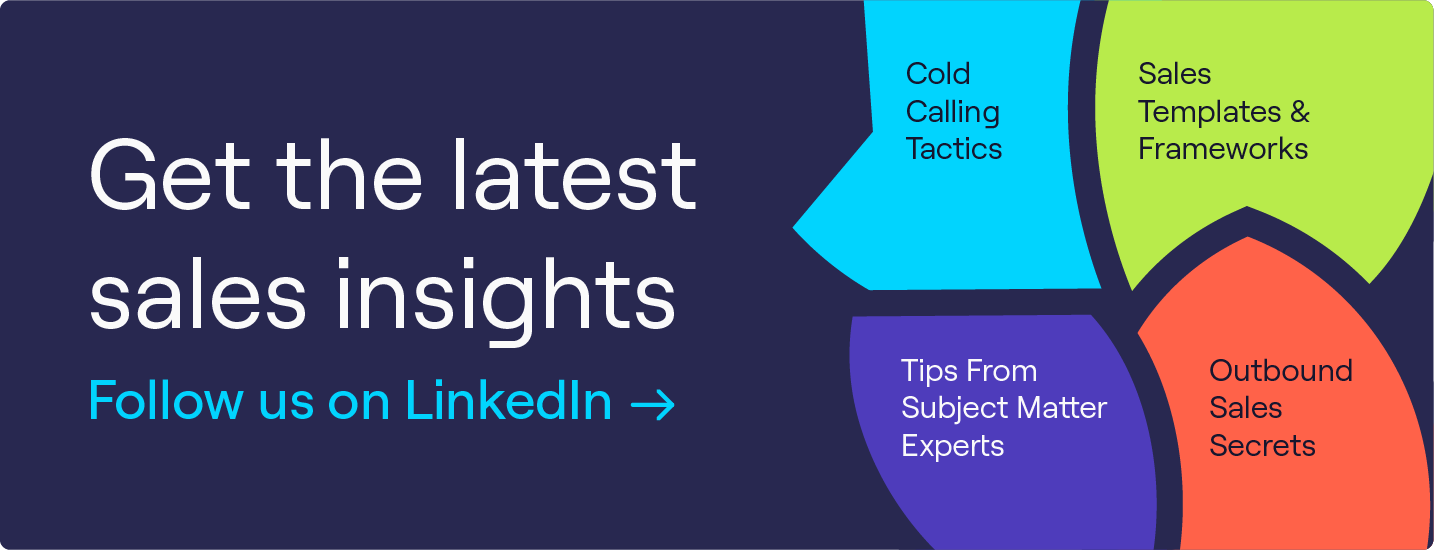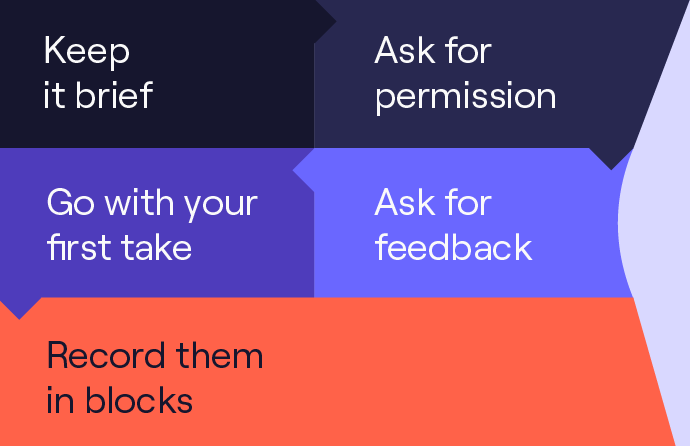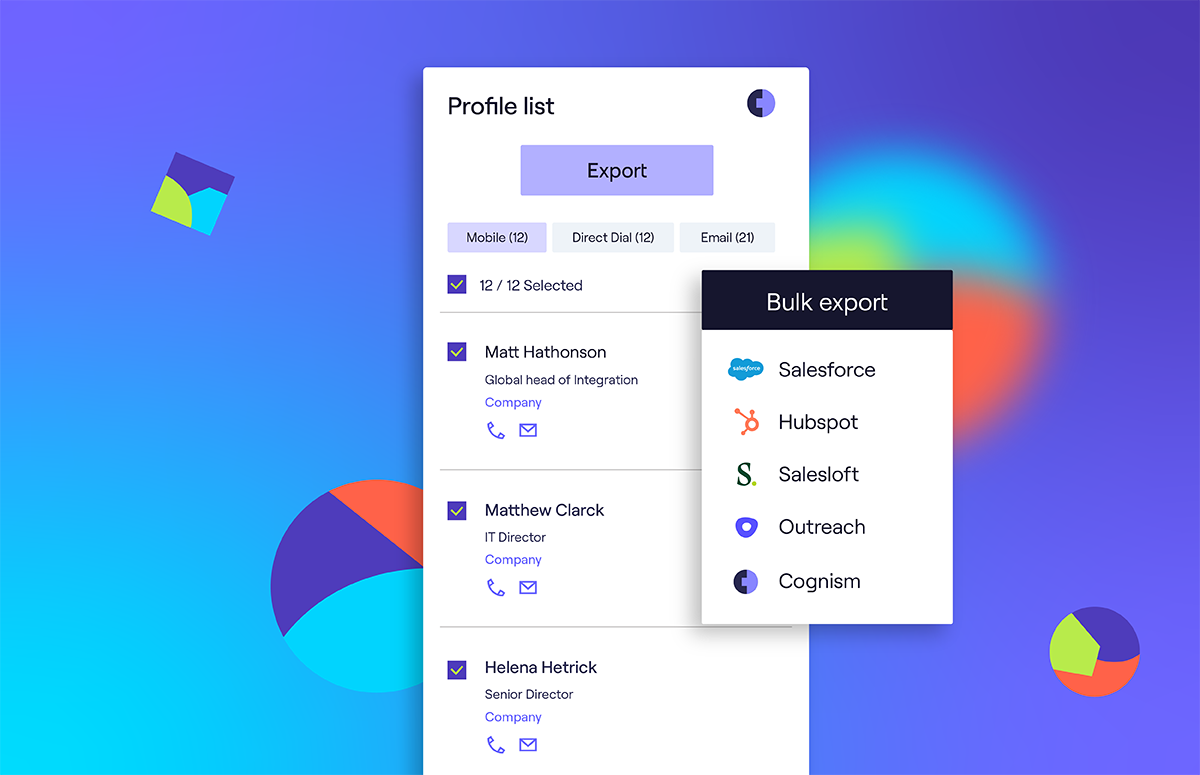A Week in the Life of an Account Executive
You could read every sales book available about how to be the best.
But if you’re not speaking to people who are actually where you want to be…
You may not get there.
You may not know how.
Or what the role you’re striving to be in even entails.
So, we went ahead and found that all out for you.
We chatted with Catherine Gardner, our top-performing Account Executive (AE) of Q3 2021.
We wanted to know what the week in the life of an Account Executive looks like.
Scroll 👇 to find out!
The day-to-day of an Account Executive
If you’re aspiring to become an AE, right off the bat, you need to know that 70% of your day will be spent on Zoom.
Why?
Well, as Cat said, the primary function of your role is managing multiple calls with prospective clients, every day.
Cat expanded on this:
“The aim is to identify gaps or pain points which we can solve. The majority of your day will be spent having those talks and then the rest is spent in Salesforce or in your inbox ensuring that all of the opportunities are up-to-date and that all action points are complete.”
Throughout your day there are various other tasks that you can expect to complete such as:
- Actioning reactive calls.
- Helping with questions or requests.
- Jumping on calls to help with trials.
- Catching up with the SDR team (who are responsible for arranging your client conversations).
- Updating and strategising with them on how you can further progress your deals together.
When you have your catch-up call with your SDRs, you’ll typically seek to answer the following:
- How your meeting went.
- Who else in the business (outside of the contact you just spoke to) you could potentially reach out to.
- What other departments you could loop in.
Then, your SDRs will take this information and see who they can target to continue conversations with that business.
You won’t necessarily be completing or participating in all of these tasks every day, as each day is different.
But you’ll certainly be completing these tasks weekly.
And once you’ve got your daily and weekly tasks down, you’ve got to look at what the AE role entails in a broader sense 👇
The core responsibilities of an AE
As an AE, there are two main things to focus on:
1. Generating revenue for your business
Cat explained how she does this:
“We’re managing accounts from the initial demo conversation on Zoom up to closing that deal and bringing them on as a client.”
“In order to do this, you’ve got to use the pain points and gaps you’ve uncovered in your initial conversation, and then add value using your solution to address those gaps or pain points.”
Along the way, you’ll be managing different stakeholders and different use cases.
So, to ensure that you’re going to generate the revenue you need to, you need to personalise each of those interactions.
Making the second thing you need to do...
2. Adding as much value as you can to the customer experience
How do you do this?
By ensuring your potential clients have a great buying journey.
This entails working on your soft sales skills such as:
- The way that you communicate.
- The ways in which you add value.
- Making people feel important and that you would prioritise them.
Although you know what you’re responsible for and what you need to do daily, do you know how to fit it all into one day?
Hmmm, perhaps not.
Not to worry though, Cat filled us in! 👇
How to manage your time as an AE
Cat said:
“Managing your time is one of the hardest things about being an AE. You’ll have your static new business meetings where you’re meeting people for the first time. You’ll have a lot of reactive follow-ups where people will ask to speak to you that afternoon or the next day.”
“So, you’re just adding things into the diary along the way and changing the dynamic all the time.”
“As well as that, a lot of time is spent trying to get people onboarded onto trials and managing them through the trials so that they have the best experience.”
And, as you need to take time and put effort into these things, they’re going to take up a large chunk of your day.
If you want to avoid falling behind on your tasks, you’ll want to:
- Streamline repeatable tasks.
- Be smart with time tracking.
- Plan your day around your customers.
- Get your “no” faster.
- Limit multitasking.
Then, it’s on to looking at the bigger picture of 👇
Major AE challenges and how to overcome them
The major challenges you’ll face as an AE will differ from person to person. However, Cat shared what she finds challenging in the AE role.
“For me, it’s workload and time management. They’re the most difficult parts because it can get quite overwhelming and it feels like there just aren’t enough hours in the day. So, I find that prioritisation of my time is really key.”
“When I feel things are getting quite overwhelming in terms of balancing emails coming in, contract follow-ups, time-sensitive requests, and so on - you have to think about what will bring in the greatest reward and what will bring in that revenue.”
How does Cat overcome these challenges?
By putting time aside to take all of her current conversations and all of her opportunities and to start cutting that pipeline down.
Instead of hanging on to opportunities that aren’t going anywhere, Cat focuses her energy on things that will.
It’s a fantastic way to refocus yourself and to get you thinking about what you’re going to do that day and how you can reach your goals faster.
Cat told us:
“It’s a combination of workload and pressure so you have to decide what is important and what isn’t a lot of the time.”
And how can you prioritise your tasks for the day?
By following Cat’s tips 👇
- Prepare for the new conversations you’re going to have that day - do this by going over the notes the SDRs have given you.
- Prioritise your emails coming in - the quicker you get back to people, the quicker things get done.
- Block out an hour every day for demo admin - this is incredibly important to avoid a snowball effect.
And, to fully master your AE role, you’ll want to have a suitable tech stack 👇
Best tools for Account Executives
Cat listed her favourite AE tools:
1. Salesforce
“Salesforce is going to be the key place you work from every single day. It’s what I use for managing every single one of my tasks.”
2. Scratchpad
“This tool basically takes all of your Salesforce tasks and makes it really quick to action any follow-ups, or change dates in your tasks. It’s a game-changer for admin done quickly.”
3. Gong
“It’s really important because you’re recording your calls, you’re sending them to prospects, and you can use those calls to review anything that’s been said, and then to use the calls for training as well.”
Advice for first-time AEs
Cat said:
“The AE role is incredibly rewarding. The skills that I’ve learnt just over the last year of doing this role are insane. I’ve learnt how to sell a product in a very personal way, worked on my communication skills, and built my confidence.”
“Going into the role, you can expect a lot of rewarding characteristics but it does take a lot of time to learn those skills.”
So, what should you remember when you enter the AE role?
- You’ve got to keep your head on straight.
- Action your admin.
- And, manage your time, the workload, and the pressure.
But, as Cat said:
“It’s all worth it because when you get to revenue, you feel happy.”
And once you’re in the role and want to be the top AE of a quarter, you should follow what Cat did! 👇
“I put in lots and lots of hours, but more importantly, I’m a huge advocate for getting support when you need it. So, I will always ask for training - even if I’ve been in the role for a year, I still like to review my skillset with my managers to ensure that I’m improving all the time. So, I ask for their advice and for their support.”
Cat also explained how important consistency is in an AE role:
“You’ve got to put the same amount of time and energy into every single conversation that you’ll have and also be working towards big goals.”
“When I doubled my quarterly target, I didn’t just expect it to happen. I put the same amount of effort into all of my conversations and then naturally things just came together.”
“If you put 110% effort into those initial calls, it really helps to get everything smoothly over to the finish line.”
It all comes down to being rewarded for the work you put in as an Account Executive.



%20Campaigns%20-%20FR%20copy%202.png)